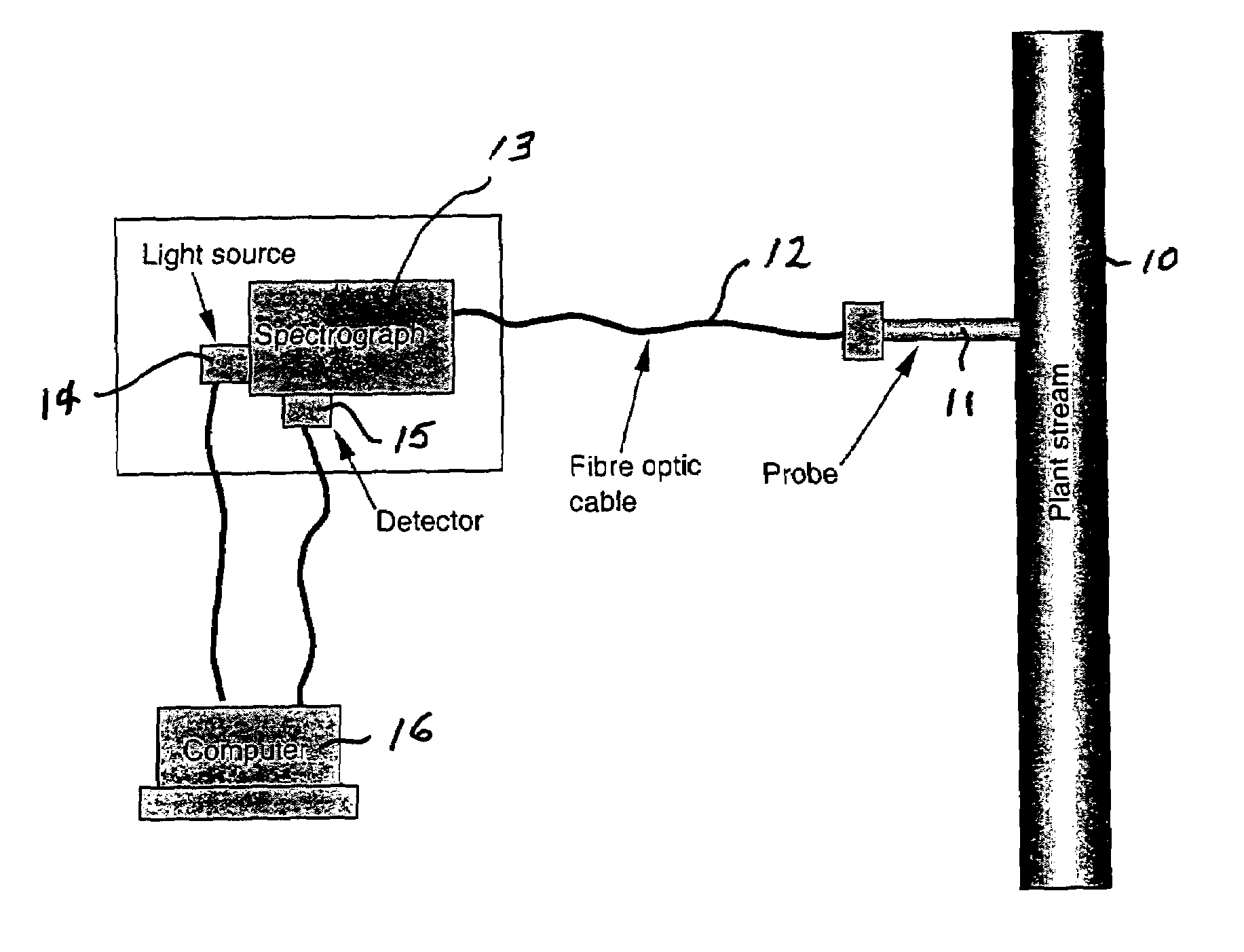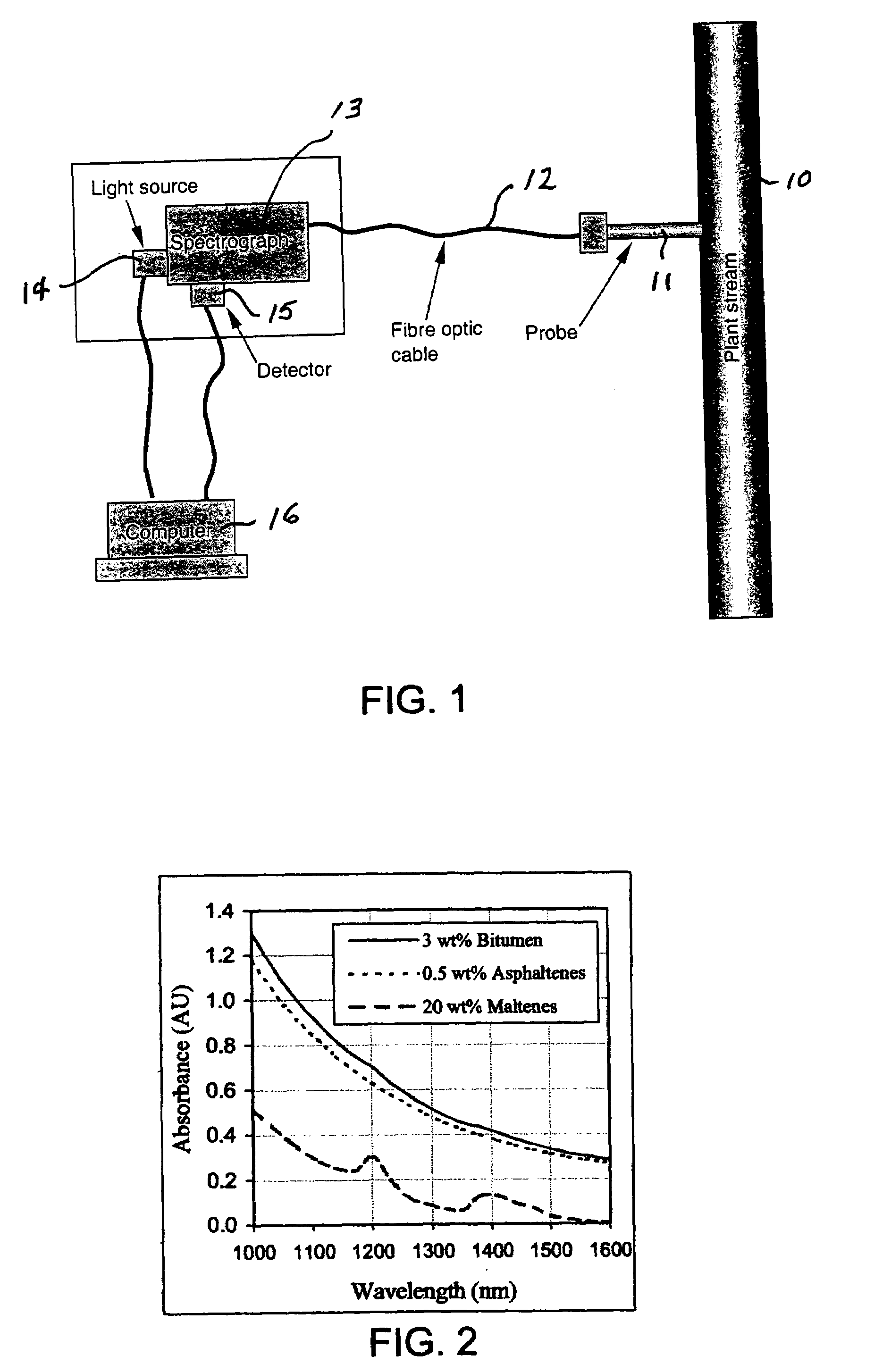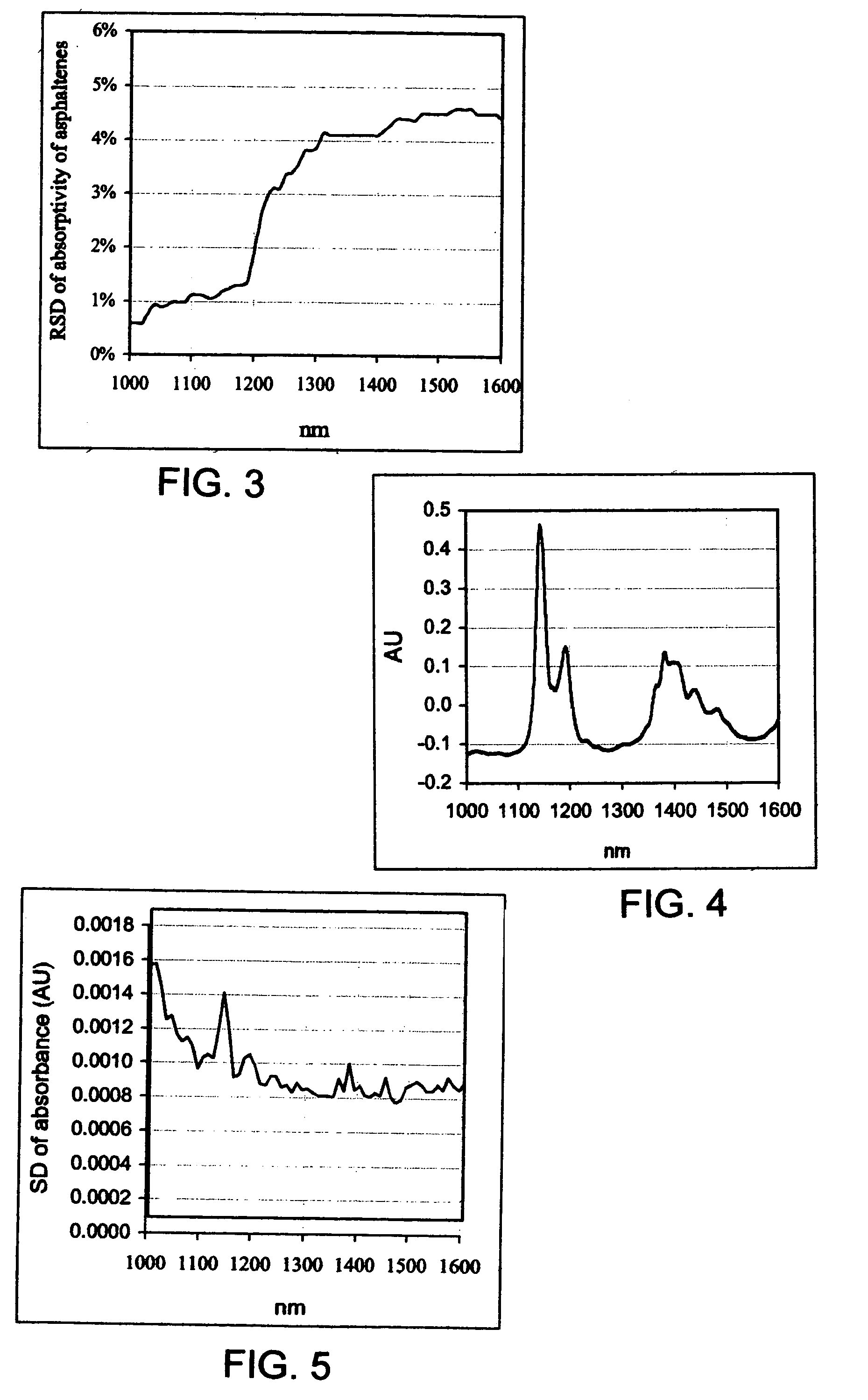NIR spectroscopy method for analyzing chemical process components
a chemical process and spectroscopy technology, applied in the direction of material analysis, radiation pyrometry, instruments, etc., can solve the problems of labor-intensive and time-consuming analyses, inconsistent results of various laboratories, and inability to meet the needs of different laboratories
- Summary
- Abstract
- Description
- Claims
- Application Information
AI Technical Summary
Benefits of technology
Problems solved by technology
Method used
Image
Examples
example 1
[0031]Tests were conducted using the NIR spectrograph arrangement shown in FIG. 1. It comprised a spectrograph that had no moving parts, a linear array detector, a stable light source, and a double-pass transflectance probe with fiber-optic cable coupling the light source and the spectrograph. The wavelength range was 900 to 1700 nm.
[0032]Sample spectra were recorded by directly dipping the transflectance probe into sample solutions. The solvent-diluted bitumen samples were measured directly with a 2-mm light path length probe without further dilution. The bitumen, asphaltenes, and maltenes samples were diluted with solvent (toluene or CS2) and the measurement was done with a 10-mm light pass length probe.
[0033]All samples were analyzed using standard laboratory analytical procedures. The results were used as reference values for establishing and evaluating the quantitative calibration models from NIR.
[0034]The n-C5 asphaltenes content in bitumen was determined by following the test...
example 2
[0041]A series of asphaltenes-toluene solutions were prepared with various asphaltenes concentrations (0.08, 0.13, 0.22, 0.44, and 0.87 g / 100 mL). NIR spectra of these samples and pure toluene were recorded using a 10-mm light path length transflectance probe. The contribution of toluene to the absorbance was subtracted by calculating the difference of the sample solution spectra and the pure toluene spectrum (considering the dilution factor). Absorptivities of asphaltenes were calculated as:
[0042]Ki=AiL×C
where Ki is the absorptivity of asphaltenes at wavelength i, Ai is the absorbance of the asphaltenes solution (subtracted toluene) at wavelength i, L is the light path length in centimeters, C is the asphaltenes concentration in grams of asphaltenes per 100 mL solution. The relative standard deviation (RSD) of Ki within the six asphaltenes solutions was then calculated. FIG. 3 shows the variation of Ki, in response to solvent dilution changes, as a function of wavelength. The RSD w...
example 3
[0043]The long-term stability of the NIR system is essential for the successful use of the instrument as an analytical tool. Several previous attempts to use spectroscopy to measure similar properties failed because lack of stability. FIG. 4 shows 40 toluene spectra acquired during a period of two weeks (4 spectra per day). High spectral reproducibility is clearly evident. The standard deviation (SD) of absorbance is presented in FIG. 5. An SD of less than 0.0015 absorbance units (AU) was observed. The RSD for the toluene peak at 1145 nm was 0.2%. The high reproducibility of the NIR system is believed to be due mainly to the highly stable spectrograph and the array detector, which have no moving parts, and the long light path length (10 mm) that prevents sample temperature variation during spectrum acquisition. The original spectra were therefore used directly for establishing calibration models.
PUM
| Property | Measurement | Unit |
|---|---|---|
| wavelength | aaaaa | aaaaa |
| wavelength | aaaaa | aaaaa |
| wavelength | aaaaa | aaaaa |
Abstract
Description
Claims
Application Information
 Login to View More
Login to View More - R&D
- Intellectual Property
- Life Sciences
- Materials
- Tech Scout
- Unparalleled Data Quality
- Higher Quality Content
- 60% Fewer Hallucinations
Browse by: Latest US Patents, China's latest patents, Technical Efficacy Thesaurus, Application Domain, Technology Topic, Popular Technical Reports.
© 2025 PatSnap. All rights reserved.Legal|Privacy policy|Modern Slavery Act Transparency Statement|Sitemap|About US| Contact US: help@patsnap.com



